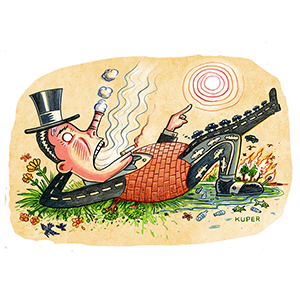My Pet World: Big dogs behave quite differently from their smaller cousins
BOSTON, MA -- Veterinary behaviorists and other veterinarians interested in animal behavior were among those attending the 2015 Veterinary Behavior Symposium July 10, attended by members of American College of Veterinary Behaviorists and other interested veterinarians in Boston, a day before the opening of the annual Convention of the American Veterinary Medical Association.
Kicking off the symposium was keynote speaker Dr. Raymond Coppinger, professor emeritus of biology at the University of Massachusetts and author of about 50 scientific papers and various books, including "DOGS: A Startling New Understanding of Canine Origin, Behavior, and Evolution" (with Lorna Coppinger, Scribner, NY, NY, 2001; $26).
Coppinger called his talk, "What Makes Dogs Tick: The Ethology of Dog Behavior." He began by explaining how changing the size of the dog changes behavior. There's no more variability in size of any species on earth as that of the domestic dog, he noted.
"So while dogs are dogs, the size of individual dogs or dogs of various breeds accounts -- at least in great part -- for their behavior," Coppinger said. "In many ways, small dogs respond very differently than very large dogs."
He suggested that dogs act as they do because of the hard-wired motor patterns they're born with. While he begrudgingly agreed that dogs do think, and conceded that our best friends have emotions, at the same time Coppinger maintained that many of their responses are automatic.
"They do it," he says, "Even if they don't know what they're doing, or why."
Coppinger also noted that dogs may fight over resources not only based on the quality of the resource, but also on its scarcity. Food and toys are just the beginning, he said. Dogs may also tussle over a hard-to-come-by shady spot, a valued resource for street dogs feeding at a garbage dump in Mexico with few places out of direct sun.
Other symposium speakers discussed:
AUTISM IN DOGS
Bull terriers who compulsively chase their tails may be autistic, said Dr. Nicholas Dodman, director of the behavior clinic at Tufts Cummings School of Veterinary Medicine, North Grafton, Mass.
For years, Dodman has studied why some Bull terriers chase their tails. Like autistic people, such tail-chasing Bull terriers may be socially maladapted, unpredictably aggressive toward others and/or may stare into space for no apparent reason, he noted. Some individuals may benefit from wearing pressure vests (tightly-fitting vests). Dodman suggested genetic biomarkers may be similar in bull terriers who chase their tails and people with autism.
Dodman's study is the first to propose that autism may occur in dogs.
BEST FENCING SYSTEMS FOR DOGS
Veterinary student Nicole Starinsky, of Ohio State University College of Veterinary Medicine-Columbus, earned the Whitney Joy Engler Memorial Student Research for her study comparing the effectiveness of various fencing or containment systems and their potential relationship to dog bites. She included fences that dogs can easily see through, fences dogs can't see through and electronic or invisible-type fencing systems.
Dogs escaped most often from electronic fencing system (when compared to other fencing), Starinsky explained. Outside their yards and without supervision, there's more potential for dogs to bite, not to mention become lost and land at animal shelter, or get hit by a car.
Dogs allowed outside in yards when no one is home to supervise were at a greater risk to bite, she found. Barking was not necessarily predictive of biting, although all dogs who do bite also bark, Starinsky's study indicated.
In the end, though, there's no significant statistical relationship between dogs who bite and fencing systems, Starinsky said, but she suggested more studies are required.
SNIFF, SNIFF
Veterinary behaviorist Dr. Margaret Duxbury, of Minneapolis, MN, presented a study comparing how dogs greet one another off-leash (at a dog park) compared to on leash-walks. Indeed, there turns out to be difference.
Leashed dogs are more like to greet one another face first, Duxbury found. Off-leash, dogs are more likely to sniff first at another dog's rear. Duxbury suggested this difference may be due to the limitations of walking on-leash, wondering out loud if some dogs have social difficulties with other dogs because they feel they have no choice about how to greet other canines.
The symposium was held in remembrance of Dr. Sophia Yin, a veterinarian and certified applied animal behaviorist who taught animal behavior at the University of California-Davis and at veterinary conferences around the world. Yin died in 2014.
========
(c) 2015 DISTRIBUTED BY TRIBUNE MEDIA SERVICES, INC.






